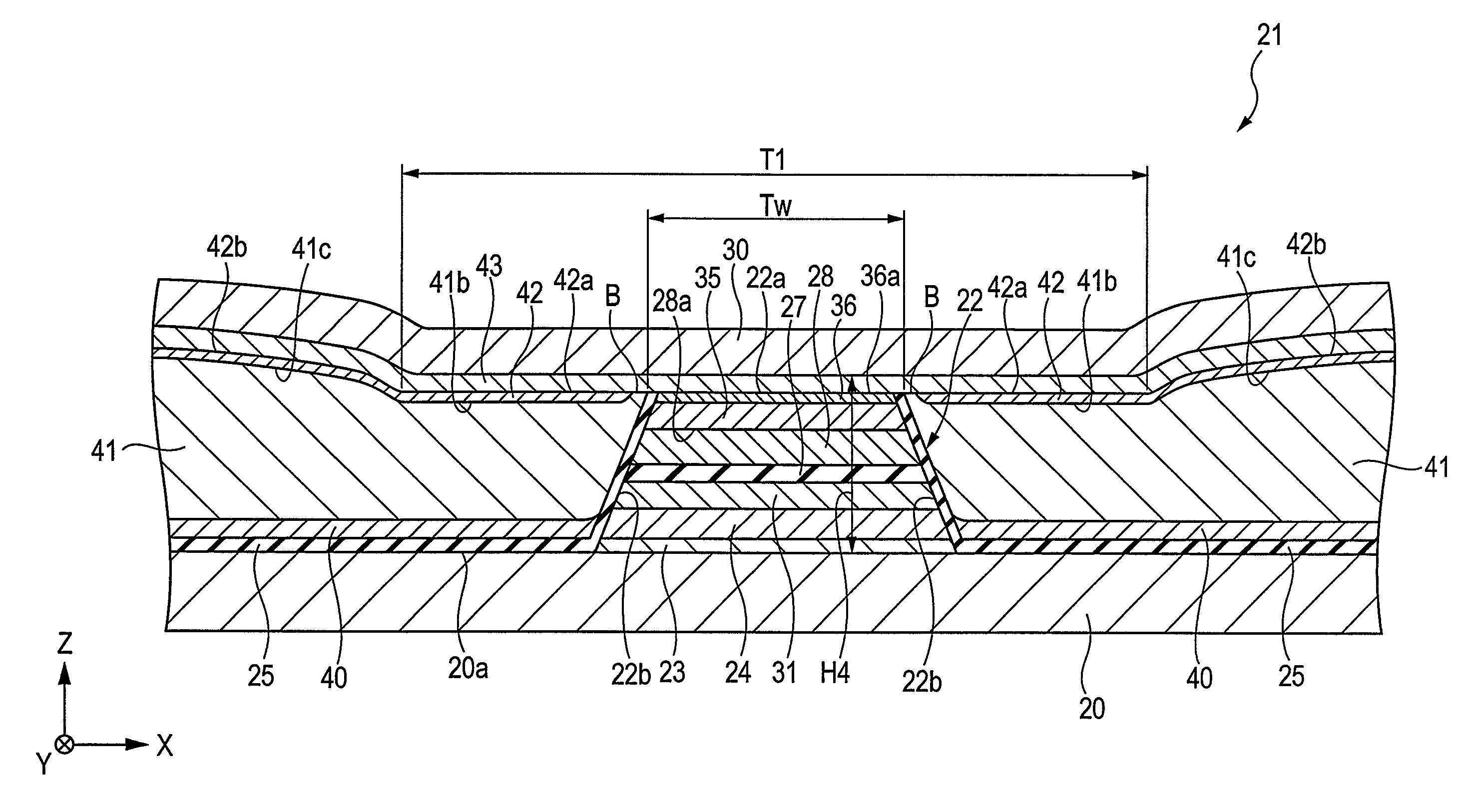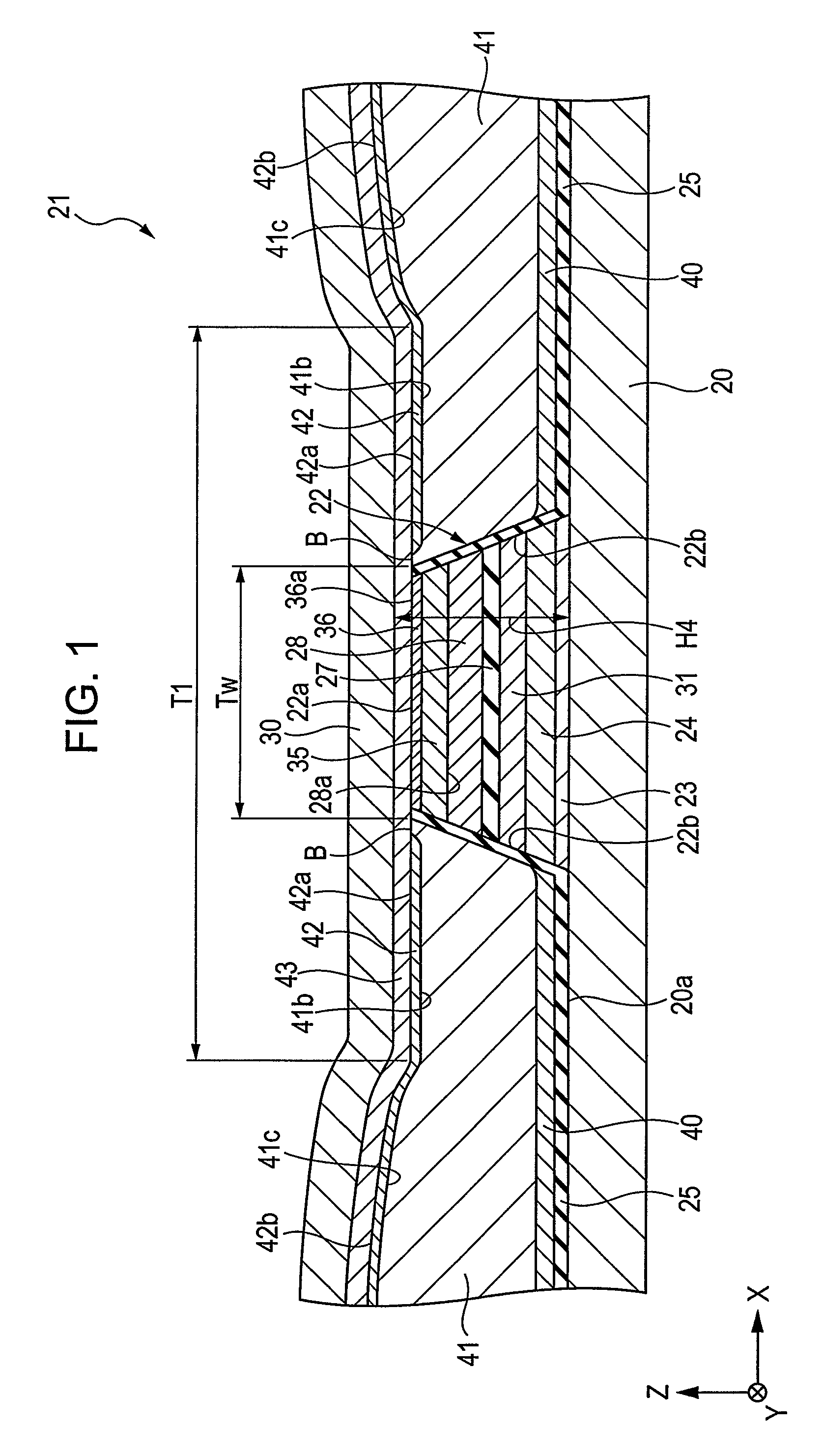Magnetic sensing element having reactive-ion-etching stop layer and process for producing same
a technology of reactive ion etching and magnetic sensing elements, which is applied in the direction of metal sheet cores, magnetic bodies, instruments, etc., can solve the problems that the known process for producing tunneling magnetic sensing elements cannot effectively reduce the distance between shield layers, and cannot be formed at each side of the laminate, so as to achieve the effect of reducing the distance, reducing the distance, and reducing the distan
- Summary
- Abstract
- Description
- Claims
- Application Information
AI Technical Summary
Benefits of technology
Problems solved by technology
Method used
Image
Examples
Embodiment Construction
[0056]FIG. 1 is a fragmentary cross-sectional view of a tunneling magnetic sensing element, the view being taken along a plane parallel to a face facing a recording medium.
[0057]A tunneling magnetic sensing element is disposed at a trailing end of a floating slider included in a hard disk system and detects a magnetic field recorded in a hard disk or the like. In FIG. 1, the X direction indicates a track width direction. The Y direction indicates the direction of a magnetic leakage field from a magnetic recording medium (height direction). The Z direction indicates the direction of motion of a magnetic recording medium such as a hard disk and also indicates the stacking direction of layers in the tunneling magnetic sensing element. The X, Y, Z directions are at right angles to one another. The X-Z plane is the plane parallel to the face facing the recording medium.
[0058]A bottom shield layer 20 is composed of a magnetic material such as a NiFe alloy.
[0059]The top face 20a of the bot...
PUM
| Property | Measurement | Unit |
|---|---|---|
| angle | aaaaa | aaaaa |
| film-forming | aaaaa | aaaaa |
| angle θ2 | aaaaa | aaaaa |
Abstract
Description
Claims
Application Information
 Login to View More
Login to View More - R&D
- Intellectual Property
- Life Sciences
- Materials
- Tech Scout
- Unparalleled Data Quality
- Higher Quality Content
- 60% Fewer Hallucinations
Browse by: Latest US Patents, China's latest patents, Technical Efficacy Thesaurus, Application Domain, Technology Topic, Popular Technical Reports.
© 2025 PatSnap. All rights reserved.Legal|Privacy policy|Modern Slavery Act Transparency Statement|Sitemap|About US| Contact US: help@patsnap.com



